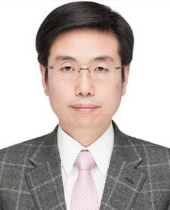


Time:11:45-12:15 Dec. 20
Augmented Reality for Surgical Vision
Prof. Jaesung Hong
DGIST, South Korea
Biography:
Jaesung Hong received the Ph.D. degree in Frontier Science from The University of Tokyo, Japan in 2004. After Japan government postdoc program (JSPS) , he worked as an assitant and associate pro- fessor at Medical School of Kyushu University, Japan. He is now a full professor of Department of Ro- botics Engineering, DGIST, South Korea. His research interests include image-guided intervention, and surgical robotics.
At the University of Tokyo, he has developed the first US-guided needle insertion robot tracking a movable and deformable organ (Phys in Med and Biol, 2004). While he worked at Kyushu University Hospital in Japan, he developed original surgical navigation systems, and clinically applied them in vari- ous surgeries (IEEE BME 2008).
After moving to DGIST, a research-oriented special university established by the Korean government, he developed a portable, AR-based surgical navigation system in collaboration with major hospitals of Korea, including Samsung Medical Center and Hyundai Asan Medical Center.
He has been a board member of Korean Society of Medical Robotics, and Asian Society of Comput- er-aided Surgery. Since 2016, he has joined the IEEE/RAS technical committee on surgical robotics as a co-chair.
Abstract:
Augmented reality (AR) is used in many fields including medicine, education, manufacturing, and en- tertainment. With advances in optics, computer systems, and surgical instruments, AR application to medicine is being vigorously researched. Particularly, as surgery using laparoscopy, endoscopy, or cath- eterized intervention have increased, AR takes an important role in many medical applications. AR is de- fined as a technique to combine a real world and virtual objects which are artificially generated digital content by a computer. As another aspect of AR is a registration between the real world and virtual ob- jects, it aims to estimate three-dimensional (3D) position and orientation of virtual objects related to the real world. Therefore, AR can allow the user to see 3D virtual objects superimposed upon the real world. With the help of AR, a surgeon can see hidden organs inside a body and improve the perception of treatment procedure by interacting with the real world. After a brief description of the medical AR, its ap- plications will be introduced.
